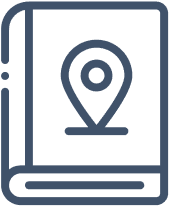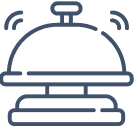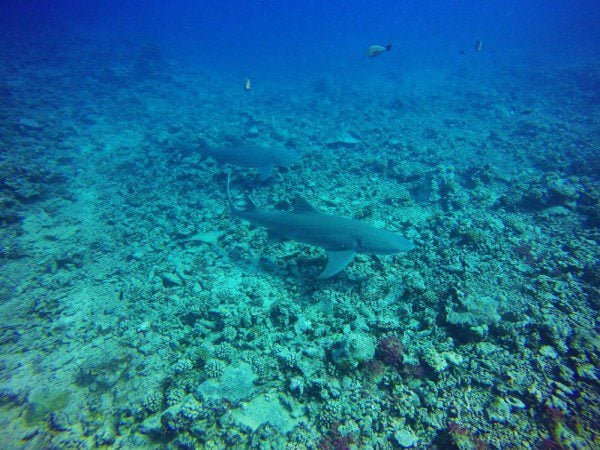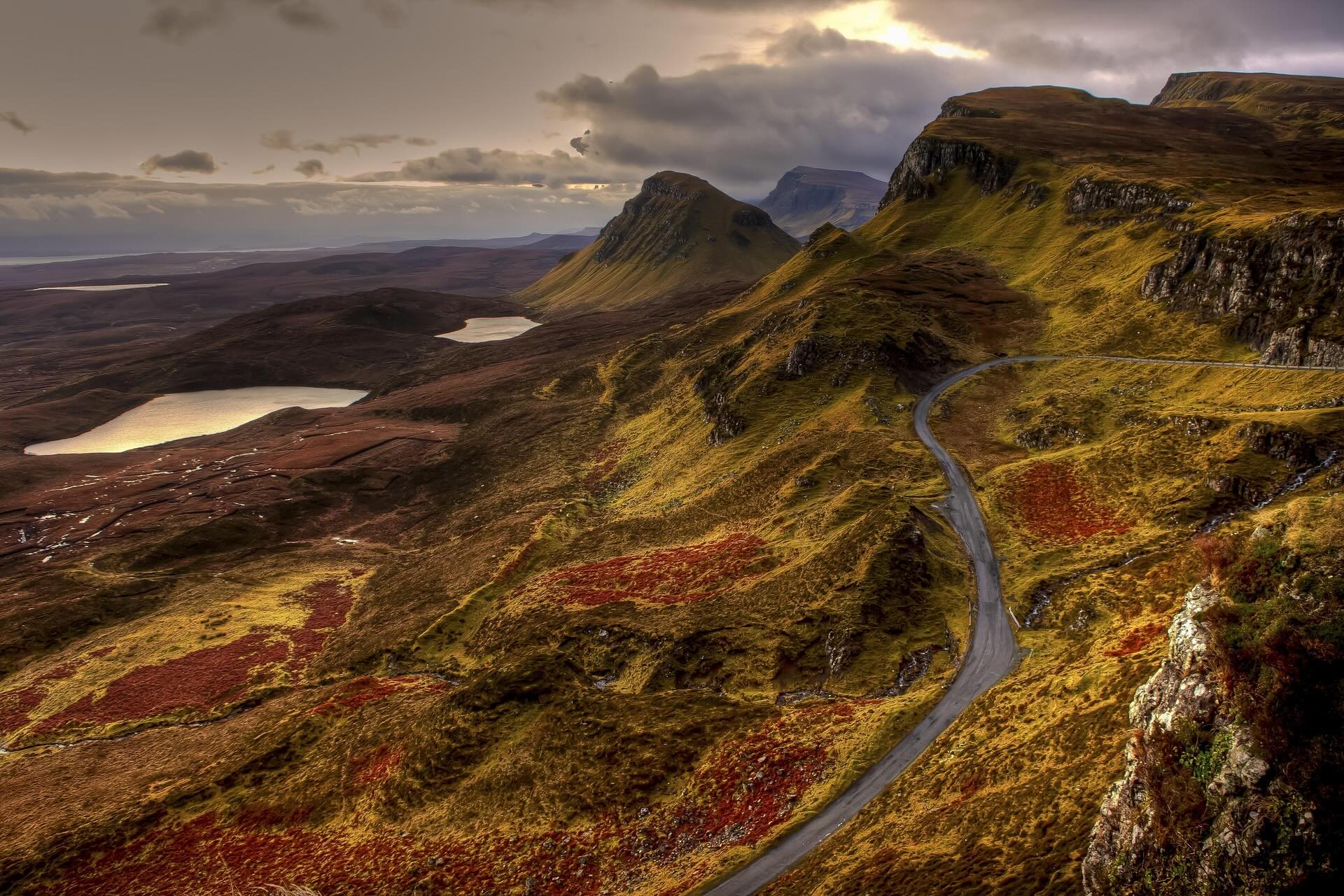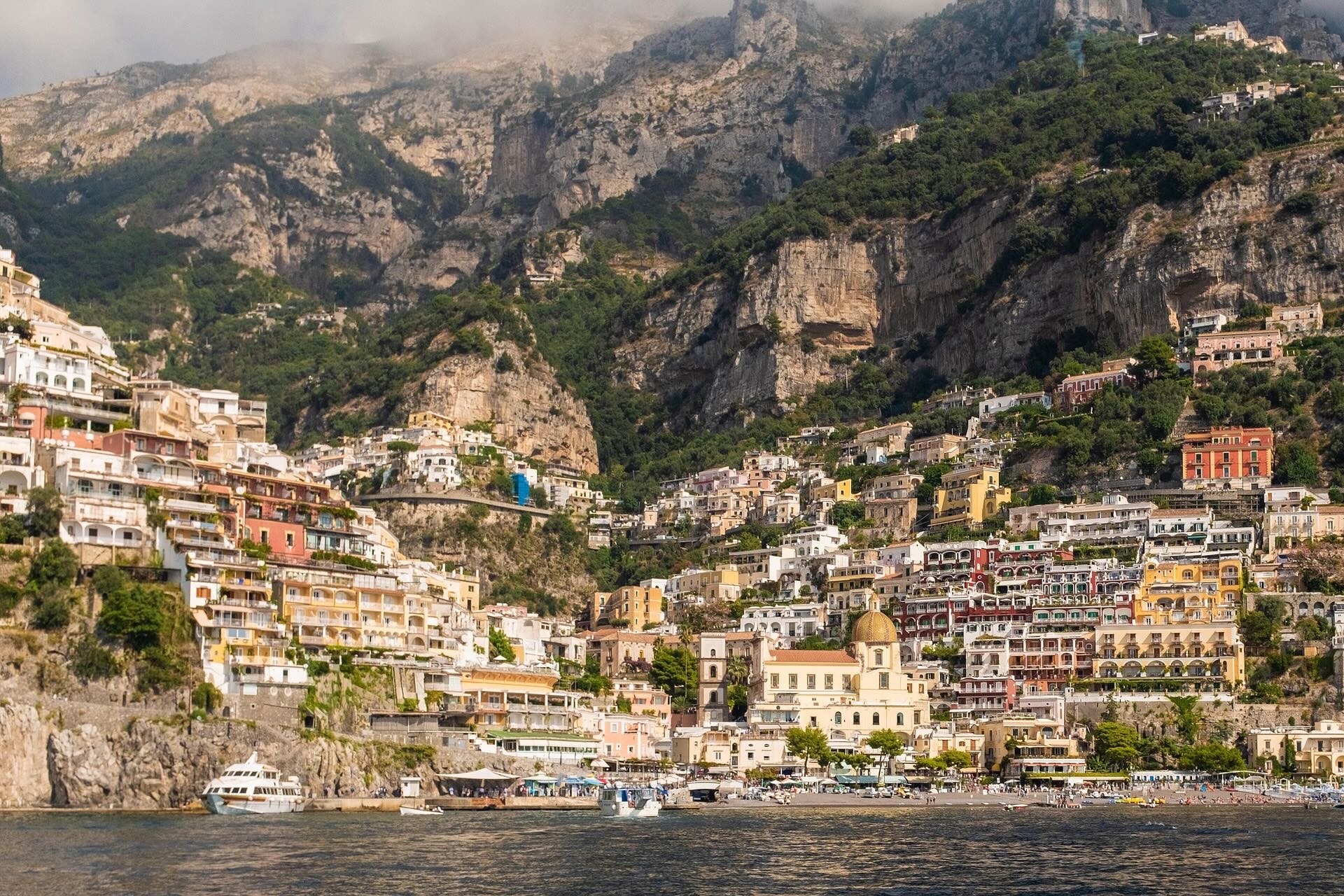Fakarava Travel Guide
Fakarava Travel Tips
This section of the Fakarava travel guide deep dives into the ins and outs of planning a trip to the atoll.
Recommended Reading
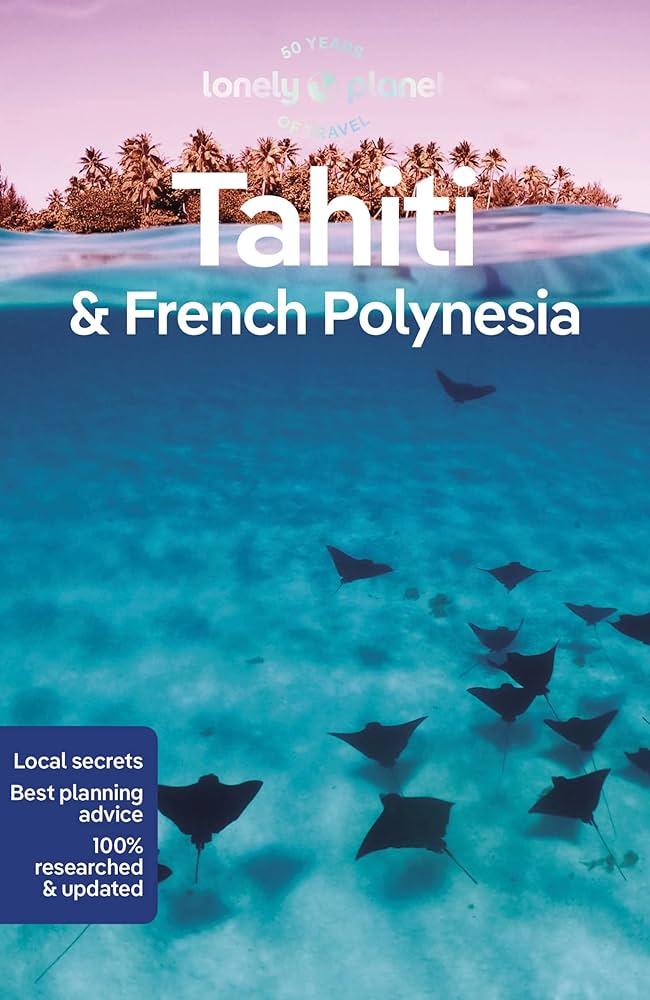
- Living A Fantasy In The Fakarava Atoll: a personal account of my first visit to Fakarava in 2016.
- Honeymoon in French Polynesia: tales of an adventure that includes both sides of Fakarava.
- French Polynesia Travel Guide: your first stop when planning a trip to paradise.
- Lonely Planet: ‘the bible’ for any independent traveler. For such a dreamy yet challenging destination, I recommend grabbing one for the road to go along with this travel guide.
- Tahiti Tourisme: the official site of the local tourism office. You’ll find relevant information about Tahiti and the outer islands.
- The Best Atolls in French Polynesia: a guide to help you match the right atoll for your travel preferences.
Tikehau, Fakarava or Rangiroa?
Every island in French Polynesia is different, so choosing the right mix of islands can be a challenging task. The same is true for the Tuamotu Atolls. Though similar in look, they each offer something slightly different. Listed below are the pros and cons of the “big three”, the most visited stops in the archipelago. For an in-depth look, here’s a guide on the best atolls in French Polynesia.
Tikehau
- Pros: very laid back and not geared for large-scale tourism, activities, and sites to see apart from purely scuba diving, pink sand beaches that are relatively easy to reach, possible to see unique species of sharks (tiger and hammerhead) even in shallow dives.
- Cons: the coral throughout the lagoon is not that impressive, lack of diversity in dive sites, travel time to dive sites takes up a lot of time, and there are few places to dine around the main motu.
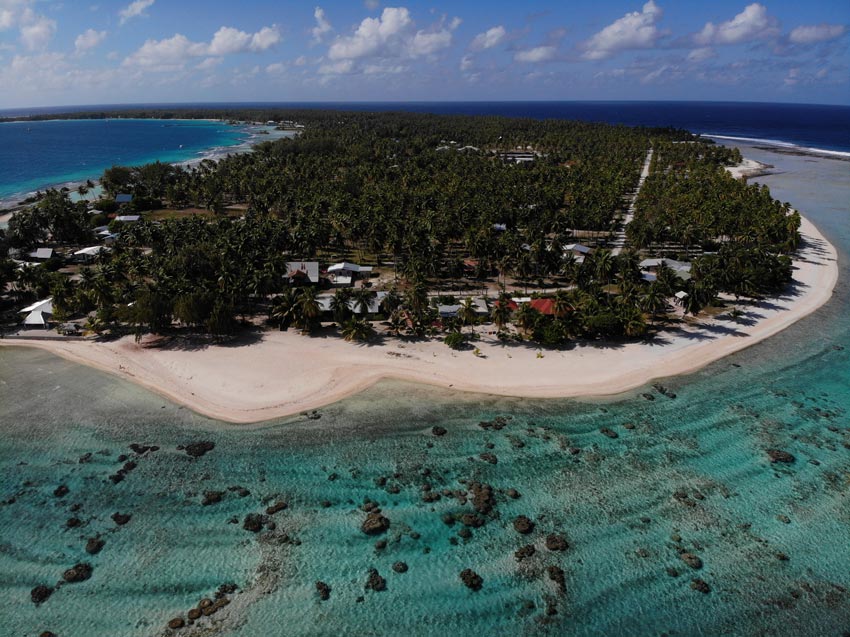
Fakarava
- Pros: laid back and still not yet fully discovered; plenty of ways to enjoy the atoll apart from diving, the coral is simply exquisite, so every dive is memorable; two very distinct dive sites – the north & south passes, the motu where you’ll be staying is huge and you can easily get lost there for the day, beautiful white sand beaches, excellent snorkeling, shark walls, lagoon excursion to pink sand beach, possibility to see ‘shark walls’.
- Cons: the north and south passes are very far apart and are essentially two separate destinations; the likelihood of spotting dolphins and hammerheads is lower, and there are not as many dive and accommodation options.
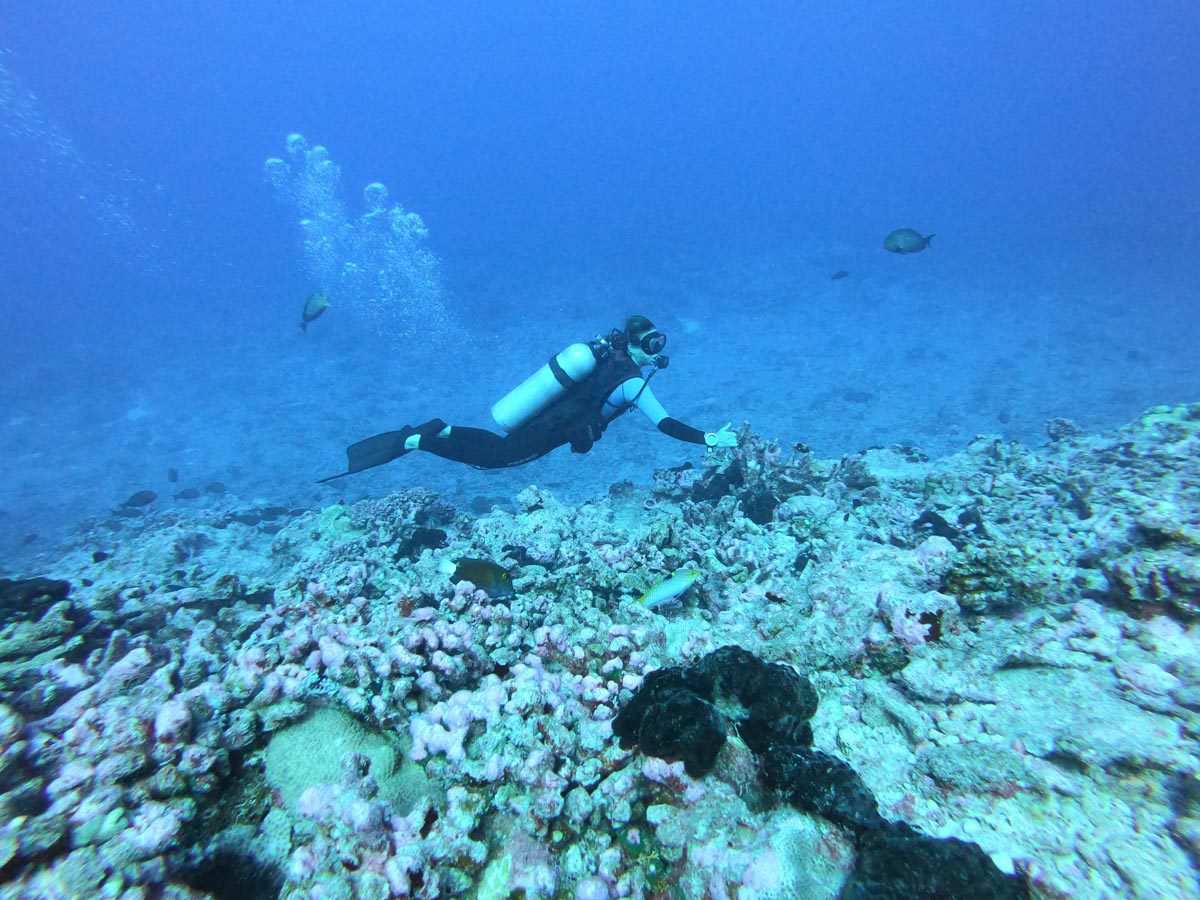
Rangiroa
- Pros: really geared toward tourism, with plenty of dive centers and accommodations to choose from, a greater likelihood of seeing the ‘big fish’ (dolphins, hammerhead sharks, silvertip sharks, manta rays, etc.), easier to get to from Tahiti, excellent snorkeling from just about everywhere.
- Cons: aside from a couple of lagoon excursions (which aren’t cheap but worth it), there isn’t much to do aside from scuba diving; the coral here is not that impressive, so if you lucked out on seeing the ‘big fish’ – your dive could be disappointing, relatively crowded with divers, the main motu where you’ll be staying is small and there aren’t that many options for self-discovery, no white sand beaches.
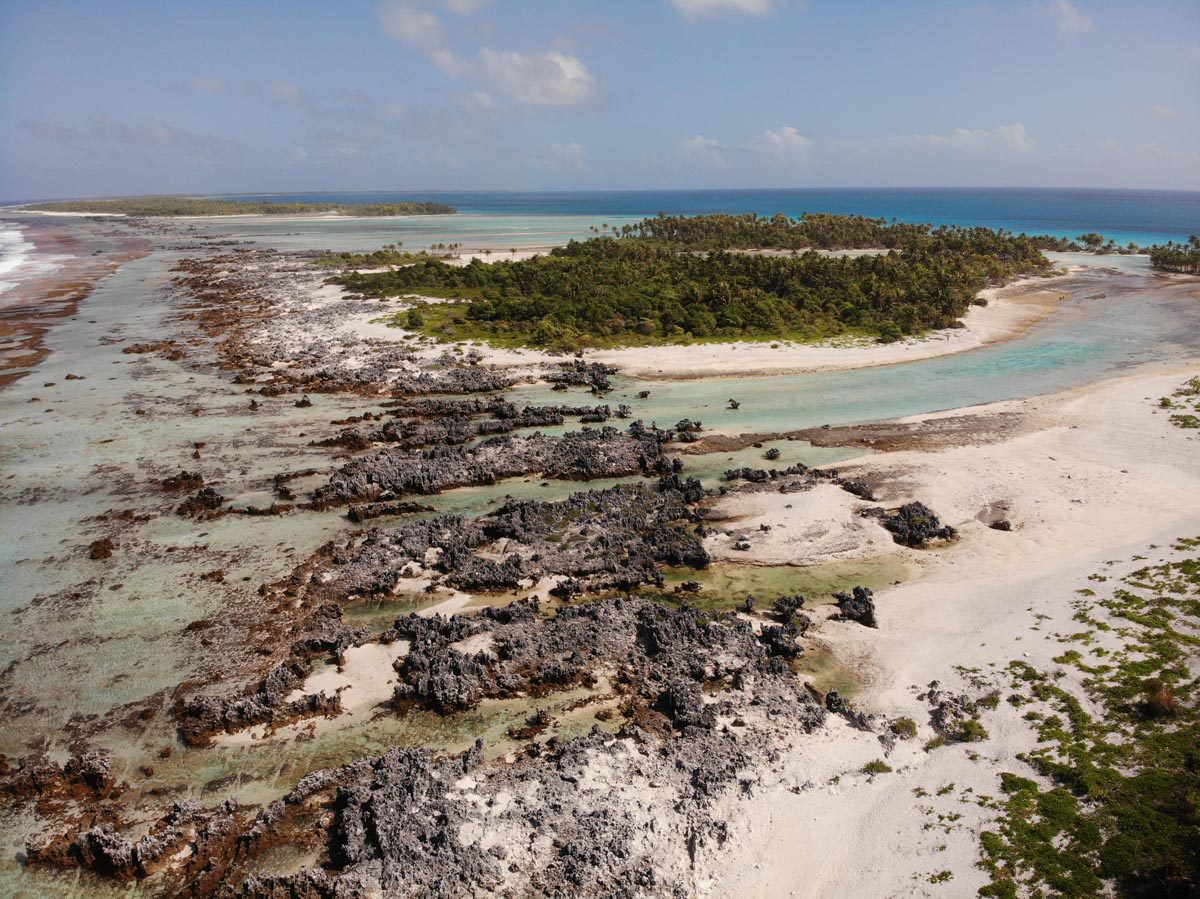
Get in touch for assistance with planning your trip to French Polynesia, either for a personal consultation or complete itinerary planning.
How Many Days Do You Need In Fakarava?
Fakarava is an enjoyable destination even for nondivers, though it doesn’t have the selection of excursions you’ll find in Rangiroa. To figure out how many days you need in Fkarava: (1) think about how many dives you want to do, taking into account you can do 2-3 dives per day (2) add a couple of days for relaxing, exploring the atoll and heading to the pink sand beach by the south pass as part of a day trip (3) take into account if you’ll be diving elsewhere in the Tuamotus.
To properly experience Fakarava South, it’s best to base yourself in one of the pensions near the south pass. Add a couple of nights if you want to get a taste of Fakarava South and a third night if you want to do a substantial number of dives in the south pass.
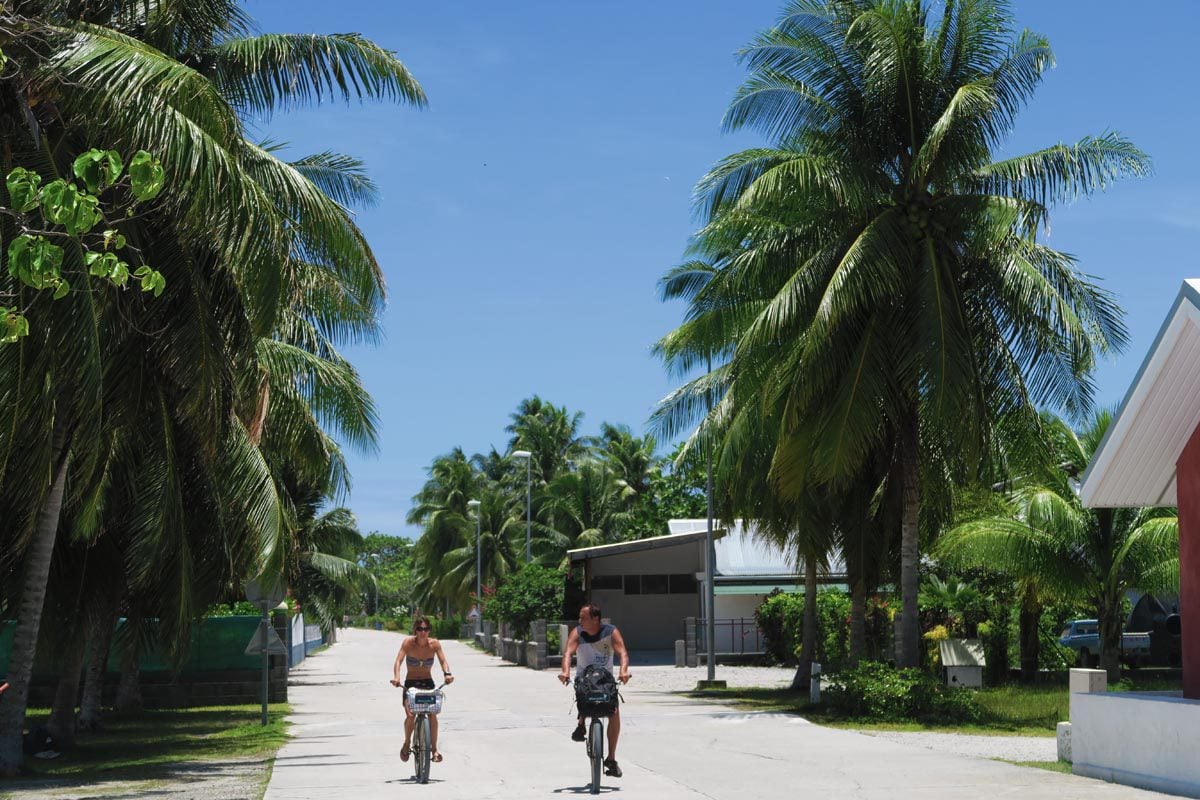
When Is the Best Time To Visit Fakarava?
The best time to visit Fakarava is during the dry season (June-Oct) when the temperature is comfortable and storms are much less frequent. During June and July, thousands of groupers congregate in Fakarava to spawn. This unique natural phenomenon attracts experienced divers and researchers from around the world.
During the wet season (Dec-April), the lagoon is much calmer in the absence of a significant breeze, which also means there’s nothing to blow storm clouds away. Expect very hot and humid conditions, but fewer tourists in an already off-the-beaten-path destination. The shoulder seasons (May and November) are decent months to visit.
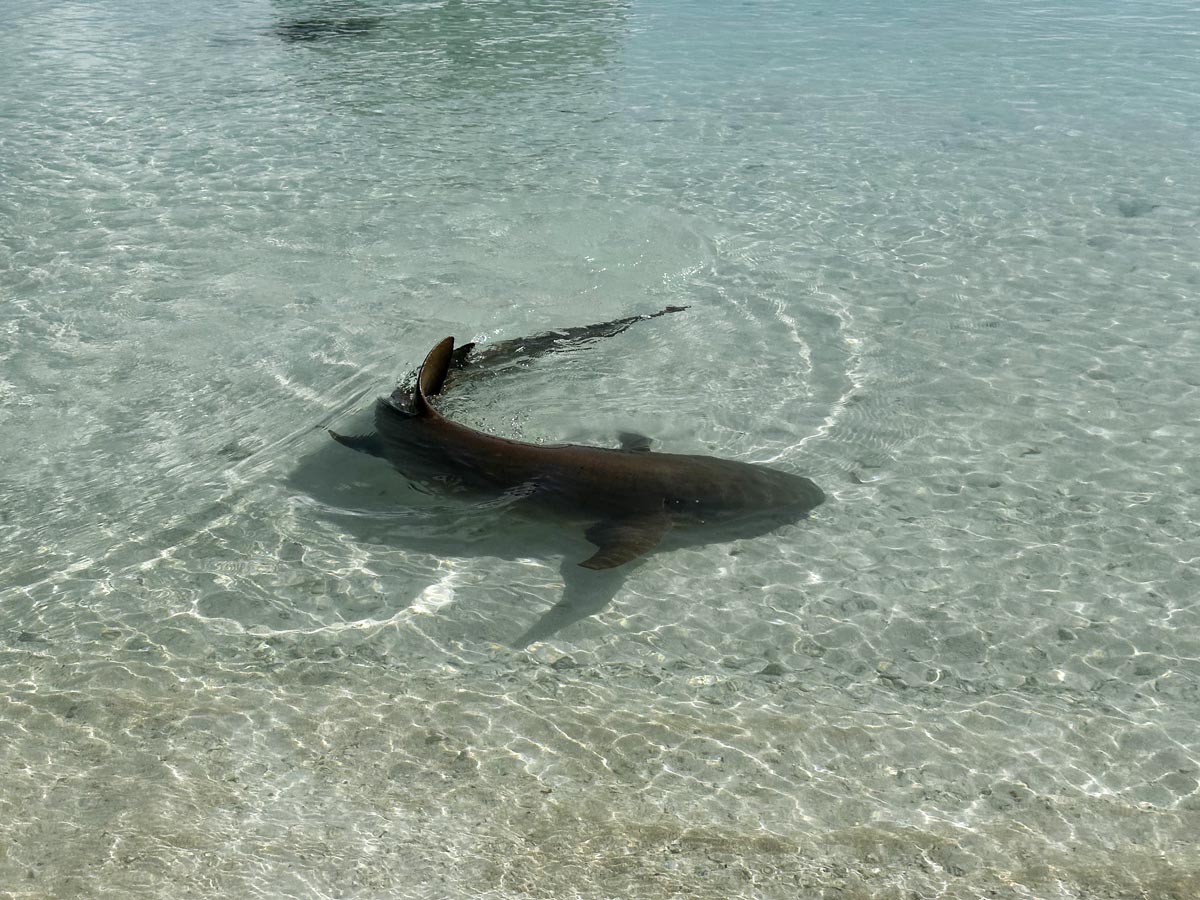
How To Get To Fakarava
Fakarava is not “off the grid,” but it’s remote enough to require careful planning.
Fakarava by air
Taking a flight is the most convenient way of reaching Fakarava. Air Tahiti serves the atoll with flights to/from Rangiroa (30 mins) and Tahiti (70 mins). Newcomer Air Moana did not fly to Fakarava at the time of updating this guide but perhaps this will change in the future. If you’re visiting multiple islands in French Polynesia, inquire about the Air Tahiti Pass.
Divers with their own gear can get an extra 5kg on their checked luggage with Air Tahiti. You might need to show equipment such as a BCD or wet suit when checking in to your flight.
fakarava by cargo ship
Getting to Fakarava on a cargo ship is possible but very challenging. You’ll need to be very flexible with your time, lucky, and speaking French will go a long way. The Saint Xavier Maris Stella IV serves the Tuamotus from Papeete, and it may or may not carry passengers.

How to reach Fakarava south
Fakarava South is about 90 minutes by speedboat from Rotoava village in the north. If you’re staying at a pension in the south, your hosts will arrange a boat transfer and a ride from the airport to the quay if needed. The return leg to Fakarava North is timed with flight departures. You can also visit Fakarava South on a day trip from Fakarava North. This is a full-day experience in which you can usually substitute the snorkeling for one scuba dive if you want. Take into account three hours on a speedboat in total.
Fakarava North or Fakarava South?
Fakarava is famous for its two lagoon passes, Garuae Pass (the north pass) and Tumakohua Pass (the south or Tetamanu Pass). With roughly 60 km of lagoon separating the two, consider these regions separate destinations. While the north pass is easily accessible from Rotoava, the south pass is about 90 minutes by boat from Rotoava.
Fakarava North
Basing yourself in Fakarava North puts you close to the atoll’s limited array of services. A wide selection of simple accommodations and a paved road enables self-guided exploration. The Garuae (North) Pass is the widest lagoon entrance in French Polynesia, with excellent drift dives that you’ll enjoy depending on your skill level and sea conditions. What to expect? Exquisite coral, lots of sharks, and a few other surprises (much more later on this)
Fakarava South
Fakarava’s South Pass is a legendary dive spot that rose to fame primarily thanks to a series of articles by a French journalist. Nowadays, this sought-after site is frequented by experienced divers and the likes of National Geographic. Apart from diving, the abandoned Tetamanu Village is right on the pass, and the atoll’s pink sand beaches lie on either side. Both are visited as part of a day trip from Fakarava North.
Accommodations are simple and very limited. Most lie on small islets (motu), offering little to no exploration space. However, the remote location is stunningly wild, and the off-the-grid vibe is a great way to spice up a holiday that might bring you later on to a luxurious overwater bungalow in a five-star resort.
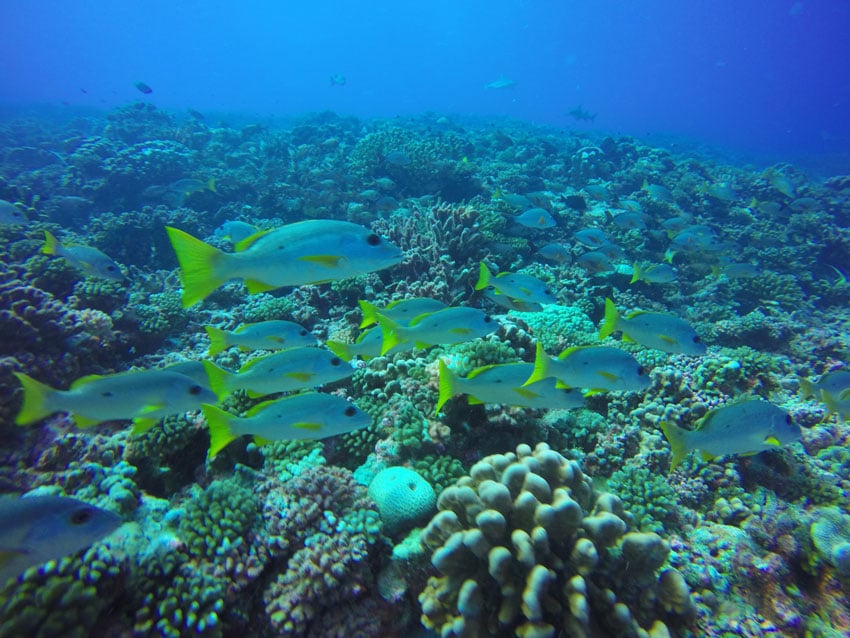
My Verdict
If scuba diving is a part of your vacation and not the prime motivation, and if you’re limited in time, base yourself in Fakarava North and perhaps head south on a day trip in which you can swap the snorkeling with a dive in the south pass. We truly enjoyed our time in Fakarava South and wished we had an extra night, but we didn’t find the dives were all that different compared to the north.
We did value the opportunity to take it slow in this incredible setting, along with the small things that you only experience when sleeping at a place. If you’re coming here on a day trip, three hours are spent on return transfers, so there’s little time to enjoy this magical remote area.
Getting Around Fakarava
The bulk of Fakarava’s small population lives in and around Rotoava village in the north.
to and from the airport
Fakarava’s airport is about 4 km west of Rotoava. All accommodations arrange transfers for free or for a small fee. Outbound passengers should check in no later than one hour before their flight.
Around Fakarava north
The best way to get around the main island is by bicycle or scooter. A paved road runs from Rotoava to the airport and continues south of the village for about 10 km. It’s flat and easily doable on a bicycle. Beyond the airport, a cyclable dirt road continues to the lagoon pass. All pensions and lodges have bicycles for guest use, with some also renting scooters and ATVs. Several suppliers around Rotoava rent regular and electric scooters (no license needed). PK markers signpost distances in Fakarava.
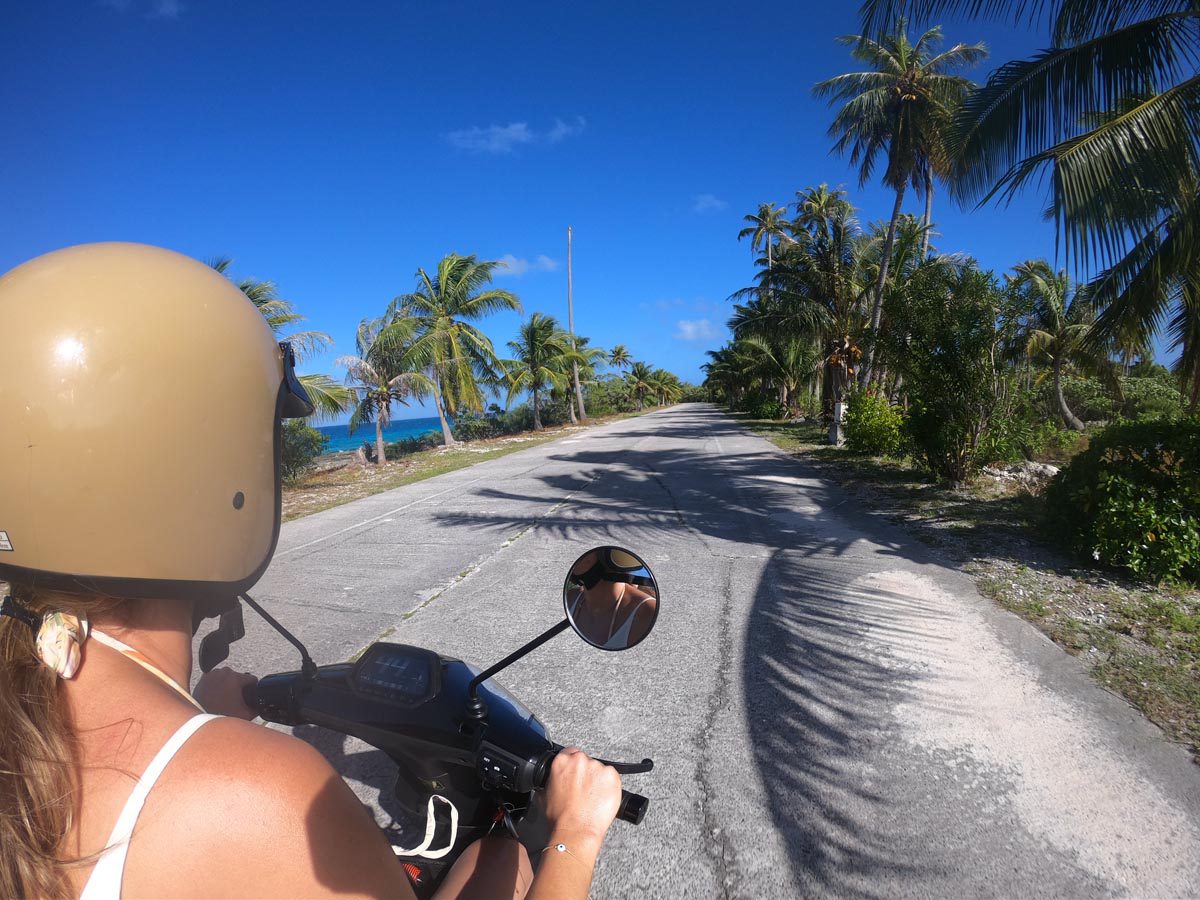
Where to Stay in Fakarava
Much like the island’s vibe, accommodations in Fakarava are laid back. There are currently no resorts on the island, primarily family-owned pensions.
Fakarava North
The Havaiki Lodge is a pampering option relative to the island’s vibe and the closest thing to a hotel in Fakarava. The lodge boasts garden-facing and beach bungalows, and I strongly recommend the beach bungalows. Units are air-conditioned and blend modern comforts with Polynesian motifs.

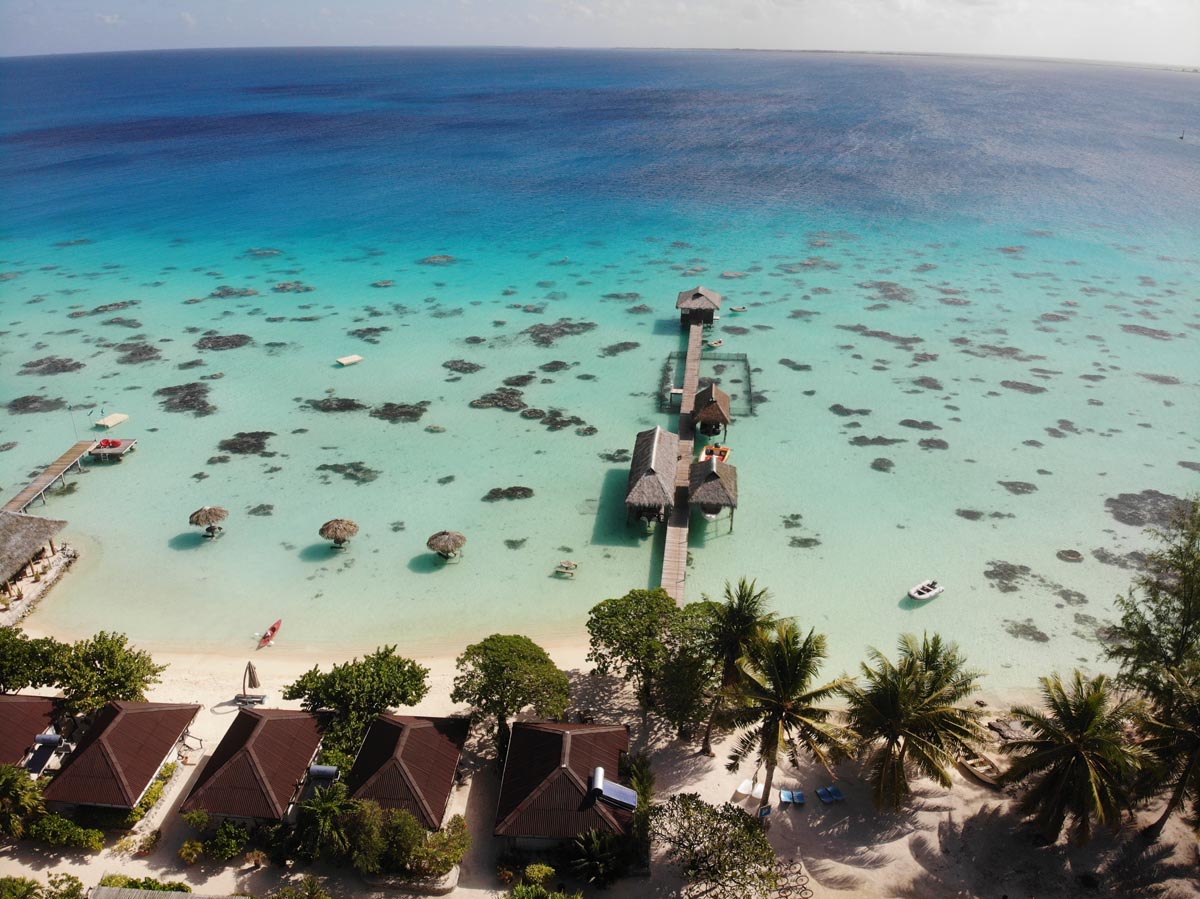
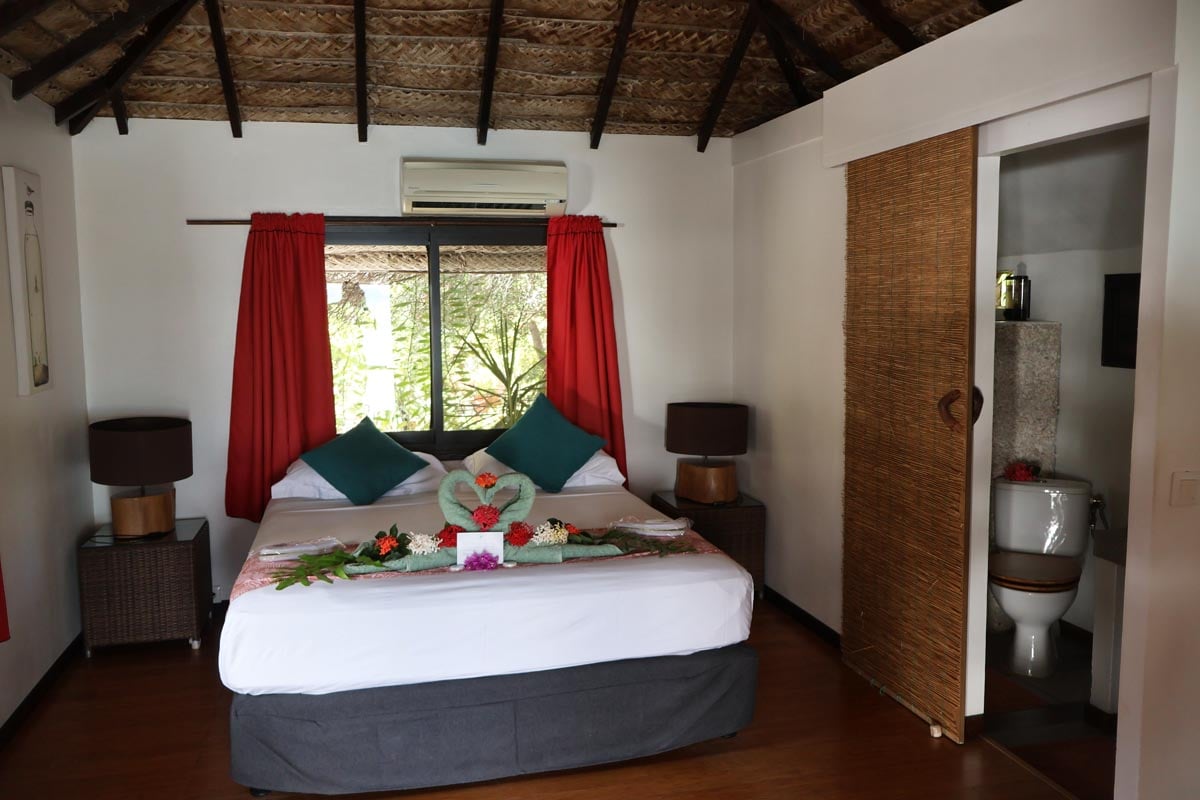
As for the beach, take a look for yourself. Go lazy on the soft sand or rent a paddleboard to explore the lagoon. Wherever you are, harmless sharks are always within reach. Before sunset, grab a cocktail and head to the edge of the pier, doubling as a pearl farm (free tours offered). The lodge offers free use of bicycles and kayaks.

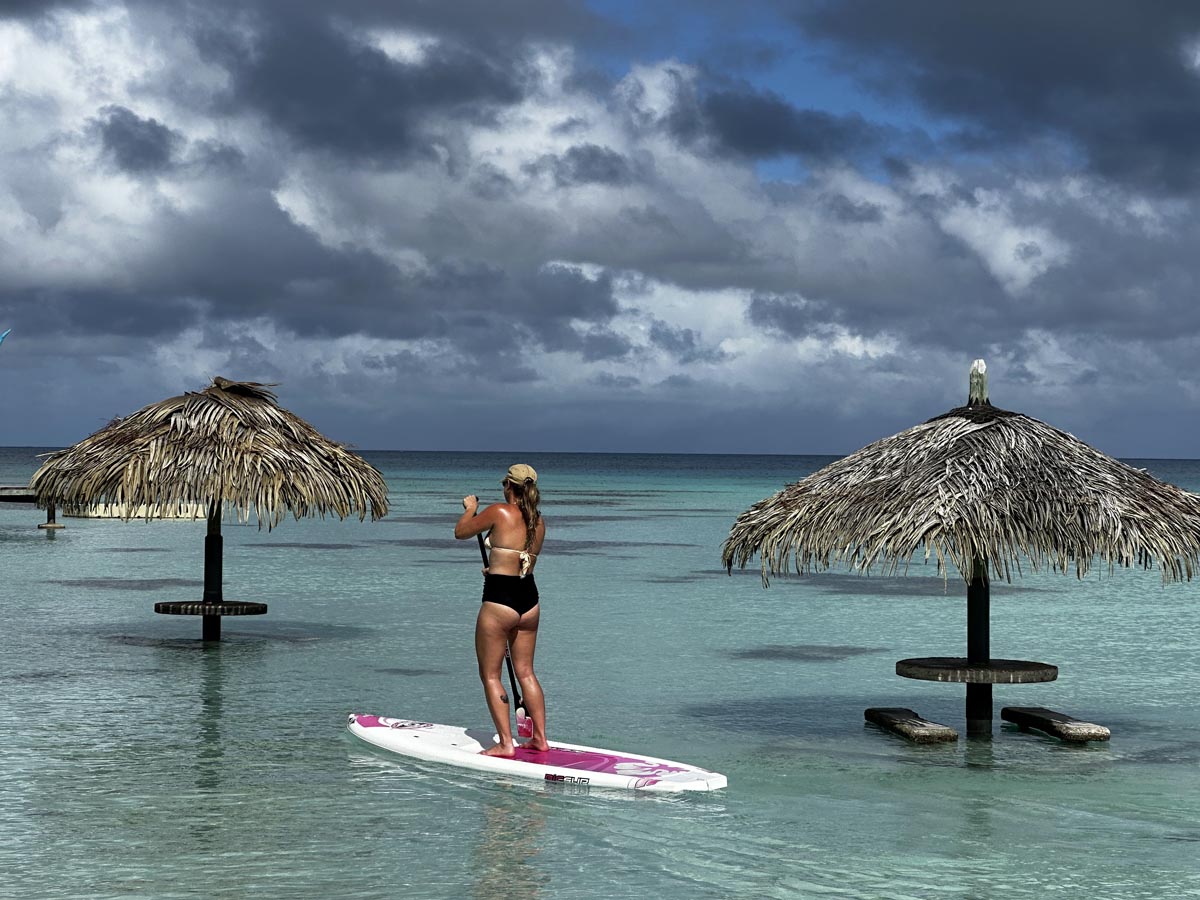

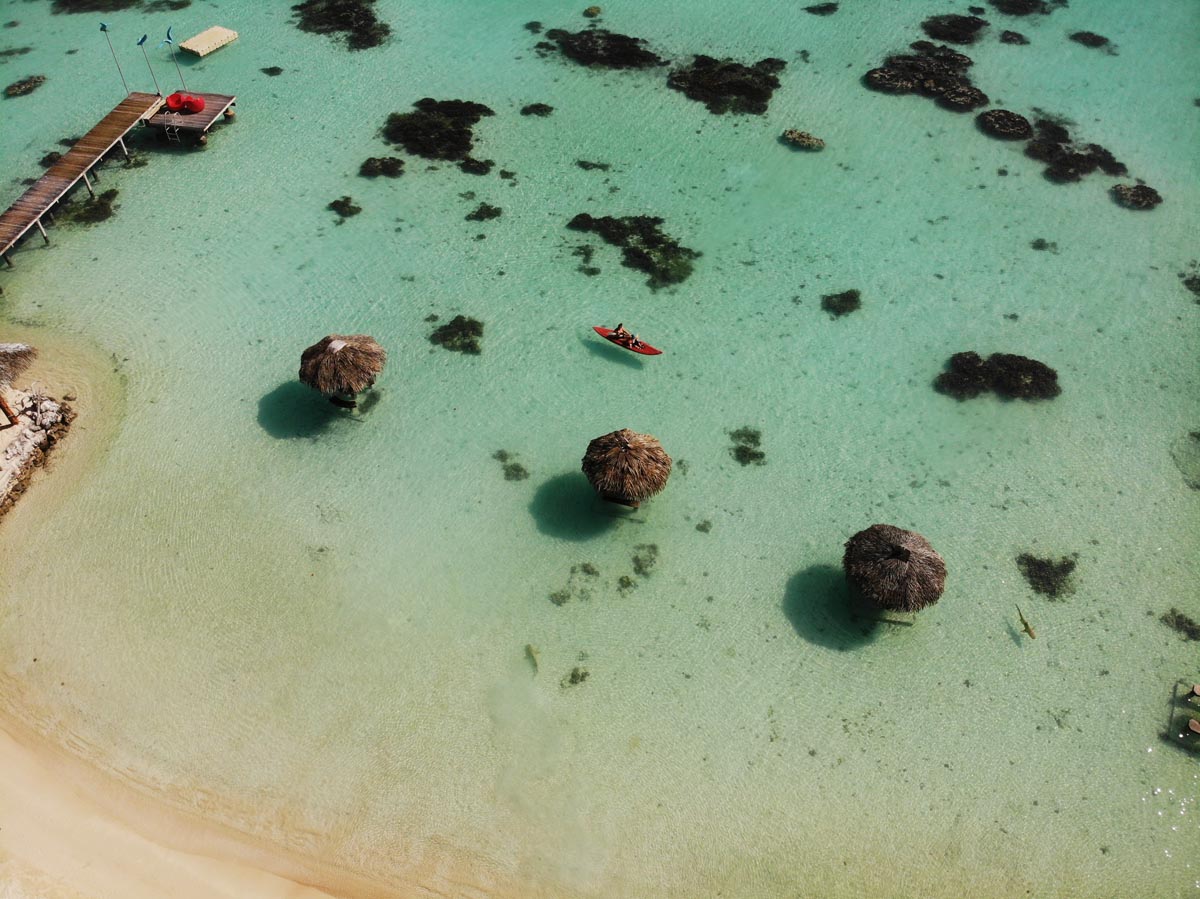
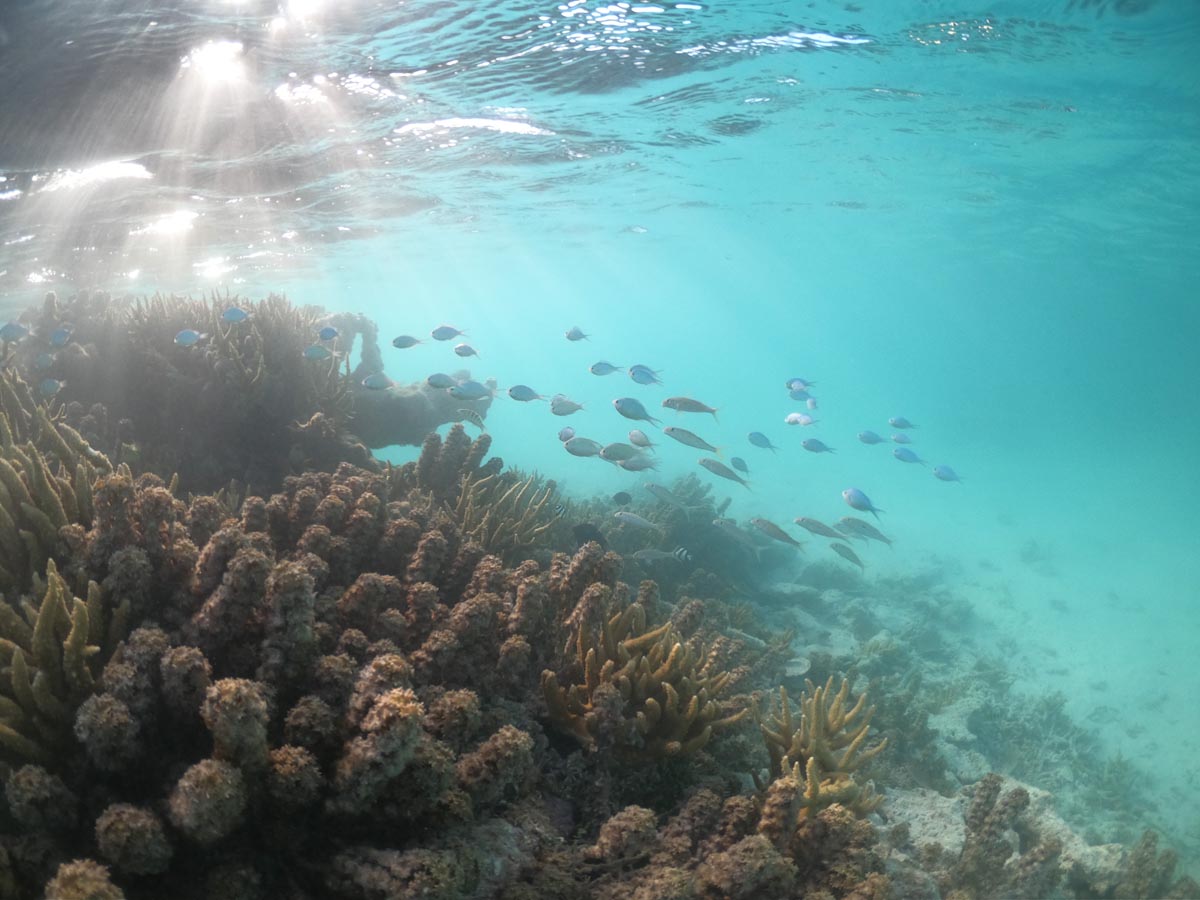
Your stay at the Havaiki Lodge is on a half-board basis, with the lodge catering to various dietary requirements, unlike some of the smaller pensions. For lunch, head to the lagoon front snack for ice-cold drinks and tasty dishes.
Other solid pensions include Pension Veke Veke, Pension Vaiama, Tokerau Village & Paparara (slightly remote but within cycling distance from the main village), and Kori Kori (very basic). The Fafapiti Lodge is further out but offers great comfort. You’ll also find several modern vacation rentals around Rotoava Village.
Backpackers, budget travelers, and campers should look into Camping Tekopa and Relais Marama. In the latter, accommodations range from simple one-bedroom open-air bungalows facing the reef to larger family units in the gardenia and noni-filled garden, and even a handful of camping spots to pitch your tent. Units are simple but comfortable.
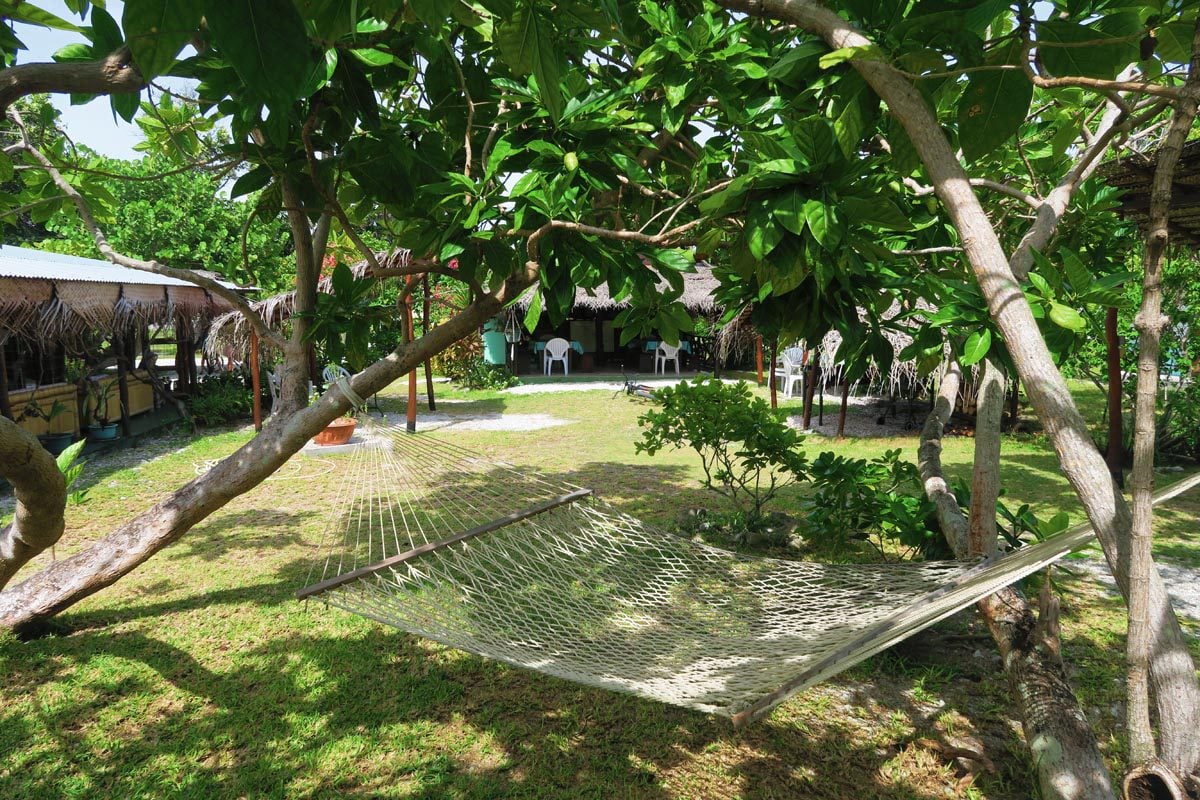

Fakarava South
Stay a few nights in Fakarava South for the dives and if you want to experience life off the grid. Due to the remoteness of the region, accommodations are mostly very basic. By far, the best pension in Fakarava South is Pension Raimiti. I stayed here for a couple of nights during my honeymoon in French Polynesia and wish I had a few more nights to stay here.

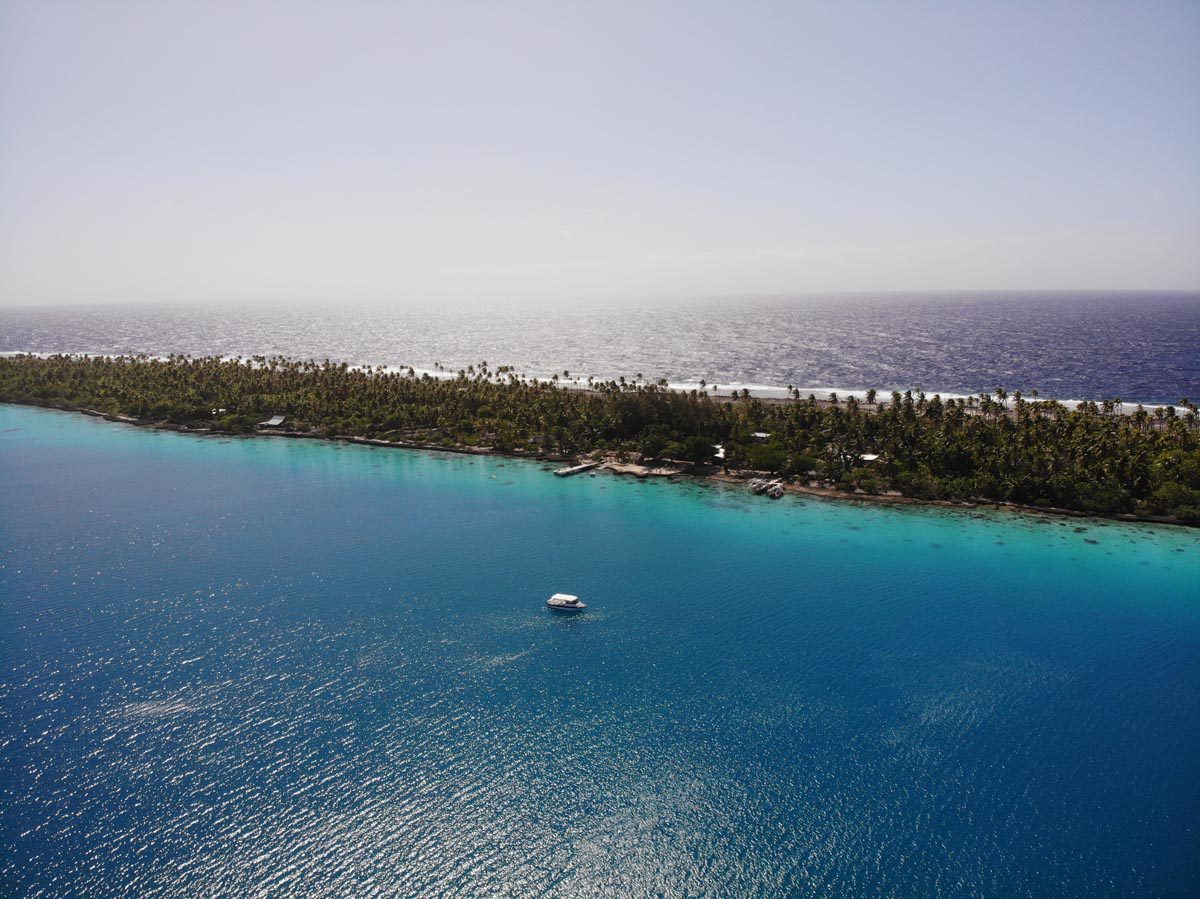
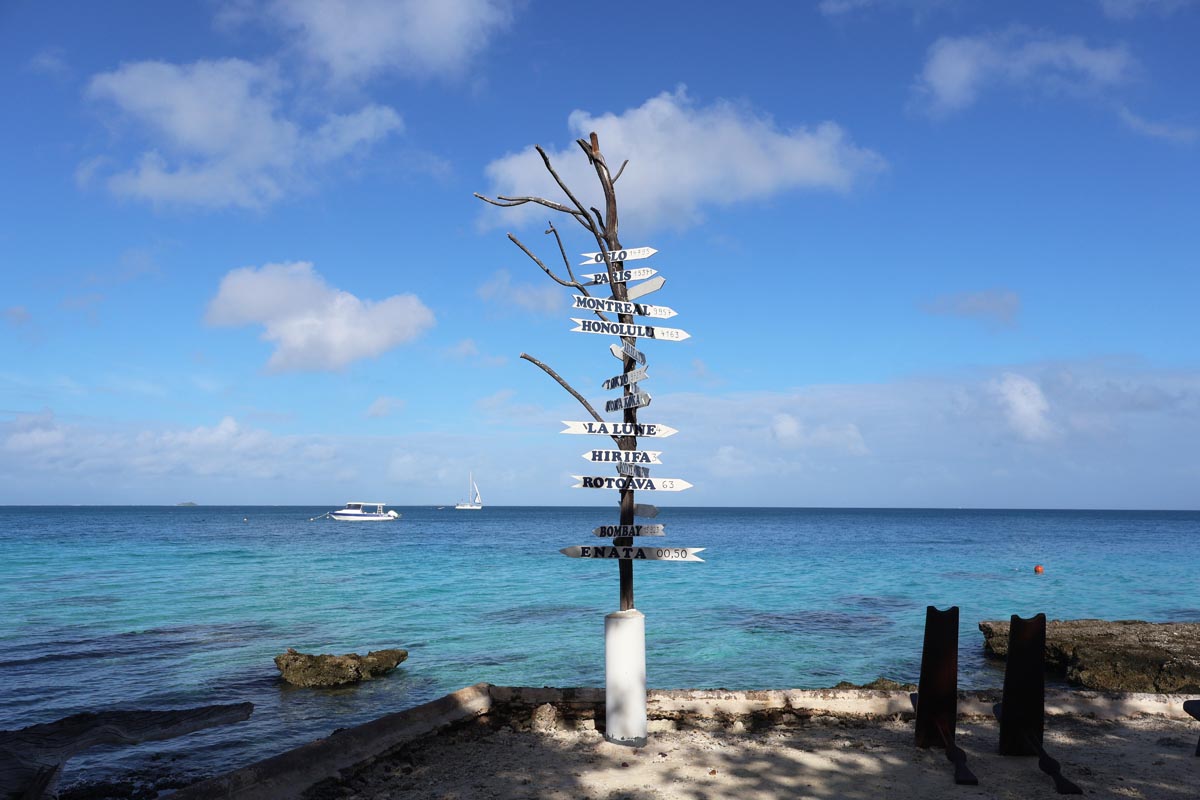
Beautifully decorated and maintained Pension Raimiti is not as close to the South Pass as the other nearby options but it is by far the best and worth every penny. It’s a small oasis in a remote setting, a wonder that is the result of a lot of sweat by the young owners and their team. Little by little, this wild slice of paradise has been turned into a natural wonderland for visitors. Your stay here is on a full-board basis including daily outings to the pink sand beach, and use of the on-site dive center. Meals are plentiful and delicious, and there’s even a bar!


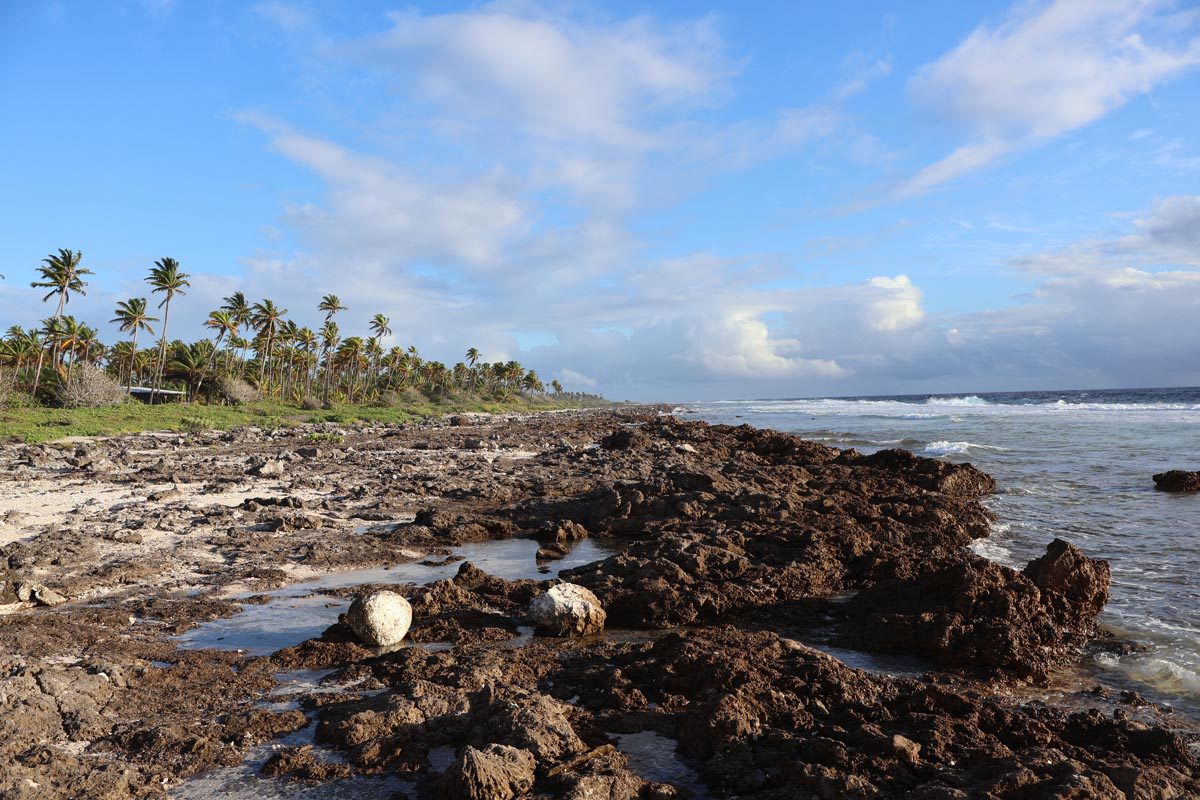
Choose from simple lagoon-facing bungalows to sturdier and newer ocean-facing bungalows. Both have electricity throughout the day (bring a splitter). When we stayed here in 2023, a cellular antenna provided excellent data connection to Vini customers (you can purchase SIM cards at the property), and plans were set to replace the plumbing with a new system running filtered water.


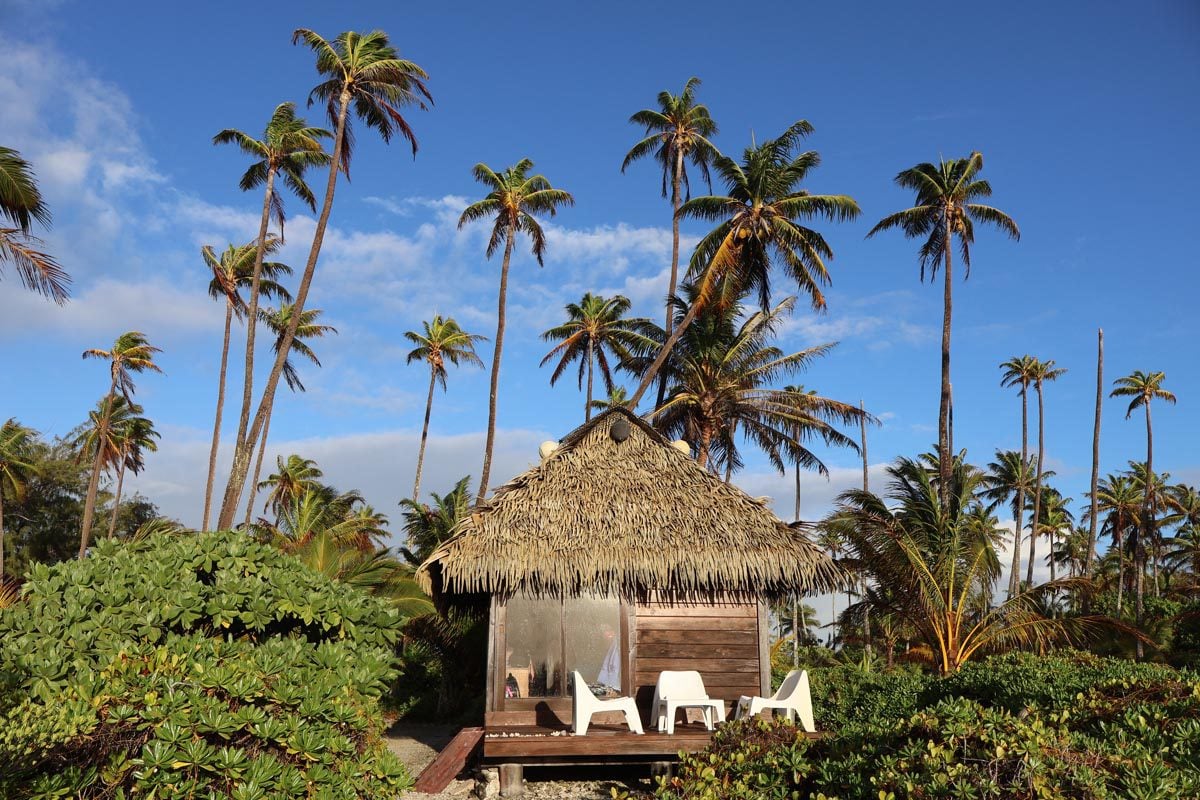
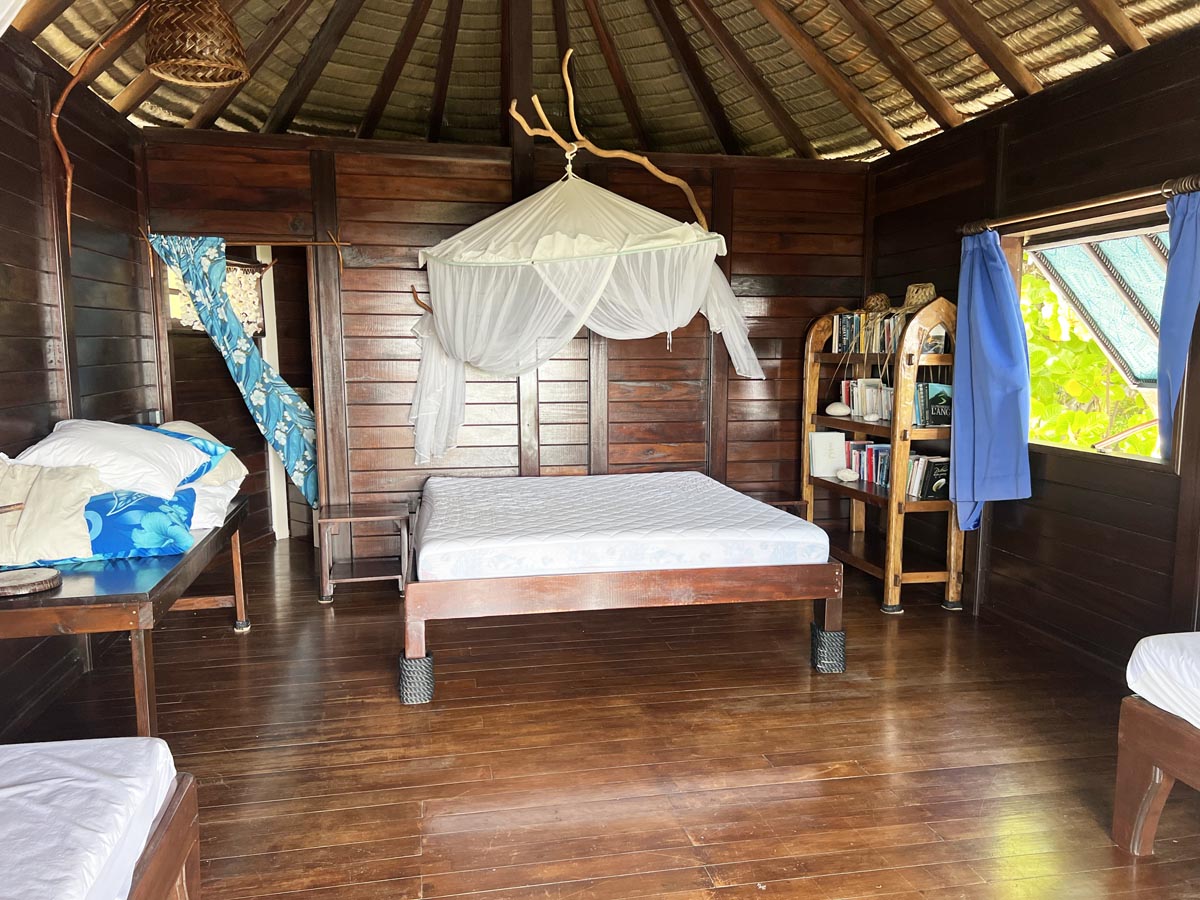
If there’s no space at Pension Raimiti, check the vacancies at Pension Tetamanu Village and Pension Motu Aito. The latter is due to complete an upgrade in early 2025 that will also include the opening of its own dive center, named Motu Aito Diving Club.
Diving & Snorkeling In Fakarava
Fakarava is designated as a UNESCO Biosphere Reserve, with restrictions on commercial fishing and pollution in place, all in agreement with the local population. The exquisite marine life and coral are simply superb and tower above anything else I’ve seen in the South Pacific.
Snorkeling
Snorkeling off the beaches around the main island is nothing to write home about, but be sure to have your mask, snorkel, and fins if you venture east or south of Rotoava. As soon as you see an interesting spot in the lagoon that’s cluttered with coral heads, pull to the side of the road and explore at your leisure as long as you’re not trespassing.
Scuba diving
Scuba diving in Fakarava is a rewarding experience each and every time, both in the north and south passes. Fakarava is known for the “shark walls”, where hundreds of sharks patrol the reef in sync, but the atoll’s pristine coral garden will leave a lasting impression.
The protection that the Biosphere Reserve status provides, along with the reef’s position in relation to the prevailing winds, allows the coral to grow and flourish in Fakarava. Like in Rangiroa, a two-tank dive usually includes at least one drift dive, depending on the divers’ experience and sea conditions. CMAS and advanced PADI or SSI certifications unlock the opportunity for more challenging dives.
I went diving in Fakarava with Dive Spirit Fakarava, who were at the time members of the Te Moana Pass, and with O2 Fakarava. Both dive centers are excellent and offer certifications and fun dives along with regular diving excursions in the north pass. Currently, only Kaina Plongee is part of the Te Moana dive pass. If you stay in Fakarava South, your hosts can help schedule your dives in the south pass. More on scuba diving in the next section of the Fakarava travel guide.
To dive in the Fakarava’s south pass without sleeping there, join a lagoon tour to the south pass and swap the snorkeling with diving, or inquire if one of the dive centers in the north is planning a dive safari in the south pass during you visit. If your party is at least four people, you can charter a private dive trip to the south pass for around 300€ per person.
What To Pack?
Fakarava is a tropical destination, and as such – I recommend packing clothes that dry quickly and keep moisture (a.k.a sweat) out. Have a look at the X Days In Y Packing List for ideas. Specifically for Fakarava, bring all the snorkeling and beach gear you think you’ll need.
Money
There is one ATM in Fakarava. You’ll find it at the post office, and it does accept international cards. However, it may or may not work, and some ATMs in French Polynesia have daily/weekly cash withdrawal limits. Inquire ahead of time at your pension if credit cards are accepted (shouldn’t be a problem). Dive centers accept credit cards.
WiFi & Mobile Data In Fakarava
A Vodafone SIM card will likely NOT have mobile reception in Fakarava but double-check that in Tahiti before purchasing. You’re better off with a Vini SIM card, as they cover all islands. Slow to adequate WiFi should be available free of charge in most accommodations but perhaps only in the common areas.
Beaches In Fakarava
Unlike Rangiroa, Fakarava has fantastic and accessible beaches. The best beach in Fakarava is PK9 and you can even visit pink sand beaches on a day trip to the south pass. More on the best options in the next section.
Drinking Water In Fakarava
Water in the Tuamotu Atolls primarily comes from the rain. Therefore, unless your pension offers filtered water, you must buy bottled water in Fakarava.
Dining
Much like in Rangiroa, there isn’t much choice when it comes to fruits and vegetables in Fakarava. The atoll’s soil isn’t fertile, the wind blows right through, and there’s not much rain. Shops mostly sell canned goods and imported fruits & vegetables, if any are left. There are several small grocery shops in the center of Rotoava and a larger shop at the quay.
Your pension might offer the opportunity to go half-board, including breakfast and dinner. In any case, Fakarava has a few good snacks (simple local restaurants) for sandwiches, lunch, and perhaps dinner. Nearly all will pick you up and drop you off for dinner or deliver food to your pension. Notable mentions include Snack Chez Elda with its excellent traditional Polynesian dishes, Snack Kori Kori with its to-die-for lagoon views, the lagoonside snack at the Havaiki Lodge, and the Rotoava Grill in “downtown” Rotoava Village.
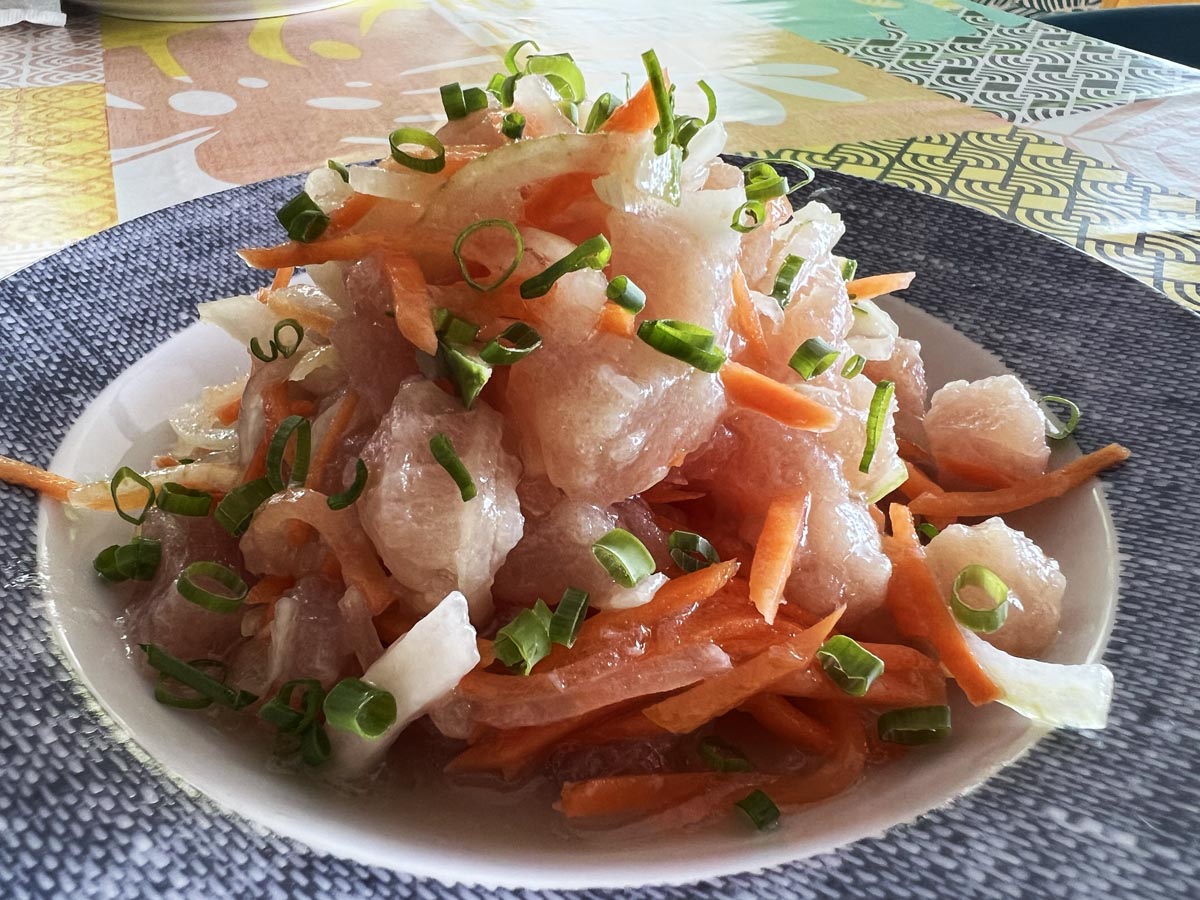
Kitesufring in Fakarava
Surprisingly, a kitesurfing school in one of the pink sand beaches by the south pass appears to be well-known in the right circles. Check out Kite Tuamotu for information on courses and kitesurfing outings in a tropical setting.
Safety In Fakarava
Explore the ‘safety’ section of the French Polynesia Travel Guide for general safety tips in French Polynesia. As for Fakarava-specific safety tips:
- Make sure that your travel insurance policy includes boat-related activities and scuba diving.
- If you’ve never done a drift dive, ensure your divemaster briefs you on what to expect.
- You might come across sand flies in Rangiroa, though they are nowhere as nasty as the ones in the Marquesas Islands. Come prepared with the appropriate repellent, and pack a wall-mounted mosquito repellent if your room does not have air conditioning.
- Pack some motion sickness pills, and don’t have a big breakfast if you’re heading to the south pass, as the lagoon might be choppy, especially during the dry season (June-Oct)
